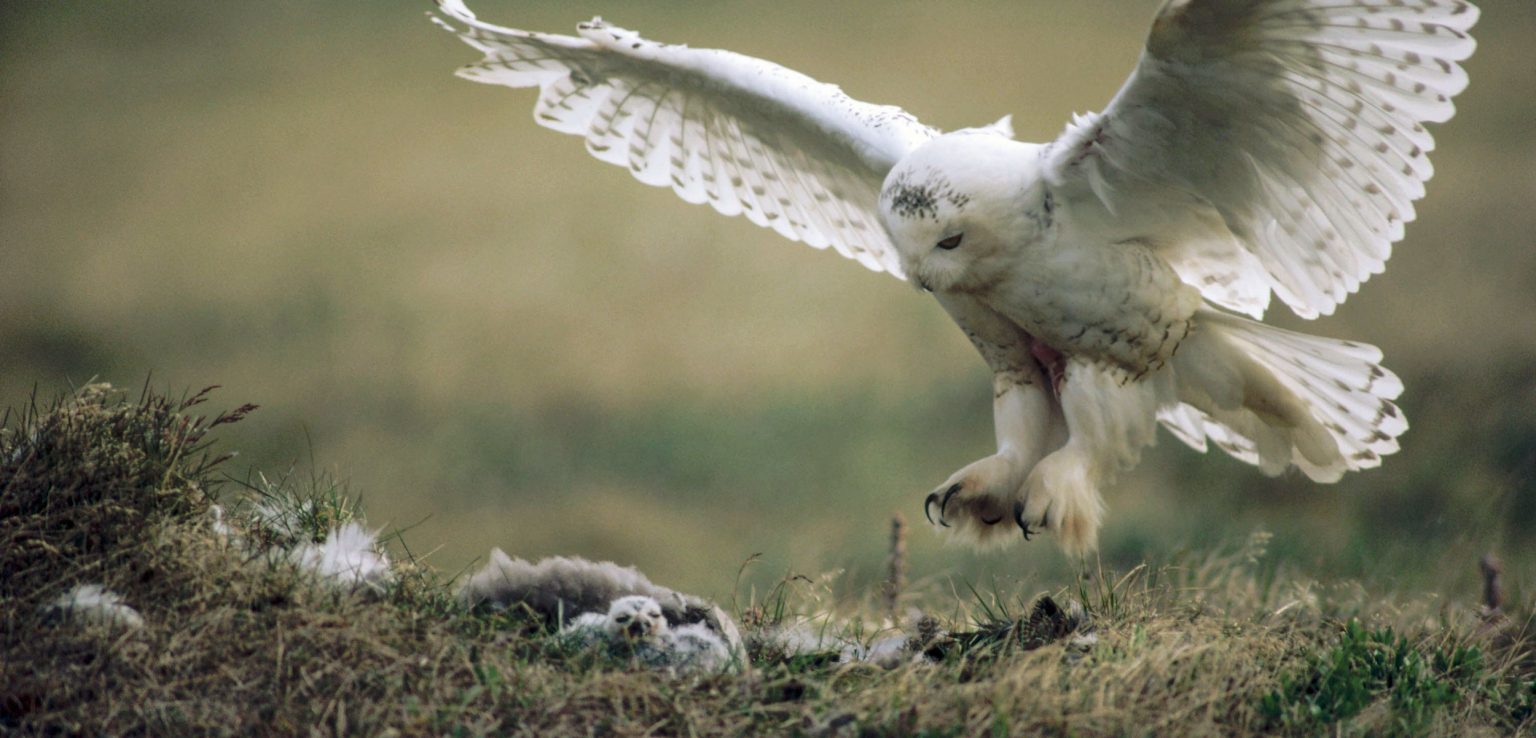Welcome to DU!
The truly grassroots left-of-center political community where regular people, not algorithms, drive the discussions and set the standards.
Join the community:
Create a free account
Support DU (and get rid of ads!):
Become a Star Member
Latest Breaking News
General Discussion
The DU Lounge
All Forums
Issue Forums
Culture Forums
Alliance Forums
Region Forums
Support Forums
Help & Search
Environment & Energy
Related: About this forumOnly Known US Snowy Owl Breeding Territory Had 54 Nests In 1995; In 2020, Zero

EDIT
This past summer marked the 30th year that Holt has studied the snowy owls of Alaska, operating through the Owl Research Institute, a nonprofit he founded in Montana. He and his colleagues spend much of their time working on owl projects in the state. But each June, he migrates north, just as snowy owls do earlier in the spring, relocating to Utqiaġvik, the largest city in Alaska’s North Slope Borough, with about 4,400 residents, as well as numerous visiting researchers and the occasional gaggle of birdwatchers. Some owls are known to overwinter here, where they spend the majority of their lives, but most relocate for the coldest months of the year to southeastern Canada; the United States as far south as Texas and Florida; and Russia.
As the birds settle in to tend their broods, Holt trudges on foot or by ATV across the tundra, sometimes with help, but often alone. He’s dogged in his efforts to understand snowy owl populations and breeding trends and how they relate to the abundance of brown lemmings, the owls’ primary food source in the Utqiaġvik area. What he’s seen in the past few years troubles him—nests are declining. In 1995, Holt documented a record 54 nests across his 214-square-kilometer study area and had to ask friends from Montana to leave their bartending jobs to help monitor them. In 2020, he found none. “Why did the snowy owls start disappearing from Barrow?” he says. “It’s too quiet out here. Eerily quiet.” This year, the breeding site—the only place in the United States where snowy owls regularly breed—now resembles more of a bachelor pad. There are more single male owls than mating pairs.
The lemmings, which Holt catches with snap traps, are also notably absent. Snowy owls can take advantage of the coastal environment around Utqiaġvik, supplementing their diet with ducks, shorebirds, and gulls (some, like the jaeger—a relative of gulls—may eat owl eggs in return). They can hunt on the ice or at areas of open water surrounded by sea ice, known as polynyas, plucking prey from the water’s surface. But Holt has found that during breeding season, lemmings make up 90 percent of their diet—and their diets aren’t shifting as lemmings decline. Parents must stay close to their offspring, so they nest where they can find enough of the rodents nearby. Holt believes there are sufficient lemmings for the owls to survive on, but not enough to fuel widespread breeding or sustain chicks. Females, he suggests, may come into the area, realize there’s not enough food, and go elsewhere.
The steady decline of both snowy owl nests and lemming abundance began just over a decade ago. Lemmings are known for booms and busts, but they’ve historically occurred here with regularity despite those fluctuations. Now, one bad year is followed by another and another. “Although the lemming populations still fluctuate, the highs are lower than they used to be,” Holt says. “It’s the same thing with snowy owls.”
EDIT
https://hakaimagazine.com/features/alaskas-absent-snowy-owls/
InfoView thread info, including edit history
TrashPut this thread in your Trash Can (My DU » Trash Can)
BookmarkAdd this thread to your Bookmarks (My DU » Bookmarks)
0 replies, 490 views
ShareGet links to this post and/or share on social media
AlertAlert this post for a rule violation
PowersThere are no powers you can use on this post
EditCannot edit other people's posts
ReplyReply to this post
EditCannot edit other people's posts
Rec (10)
ReplyReply to this post